Creating “One” from “Zero”: An Advanced Design Process for Industrial Architecture
Advanced Manufacturing Centre (AMC), Hong Kong (Part 1)
Scroll Down
The world has been swept by the revolution of “Industry 4.0,” a global trend triggered by digital technologies and the internet in recent years. These technological advances, including IoT, AI, and robotics, have ushered in an era of unparalleled data utilization and automation. As a result, manufacturing systems have undergone a radical transformation, spawning innovative business models and unlocking new sources of value. In tandem with these shifts, a surge of creativity and pioneering practices have become vital in the realm of industrial architecture, such as research, production, and logistics facilities.
Established in 1900, Nikken Sekkei has been at the vanguard of architectural innovation, delivering numerous groundbreaking projects across a broad spectrum of industrial sectors. In an age where technological advancements are accelerating at an unprecedented pace, there is an ever-growing opportunity—and indeed, necessity—to propose uncharted solutions in industrial architecture. This calls for a design process that can cultivate “one” from “zero,” embodying true innovation.
Part 1 will elucidate the evolutionary shifts in manufacturing and industrial architecture amidst Industry 4.0, along with the advanced design processes that make possible the realization of innovative architectural concepts. In the Part 2, we will take a look at the initiatives undertaken in the “Advanced Manufacturing Centre (AMC), Hong Kong” to exemplify these concepts in action.
> Part 2
CATEGORY
Industry 4.0: An Industrial Vision Revolutionizing the Manufacturing Paradigm
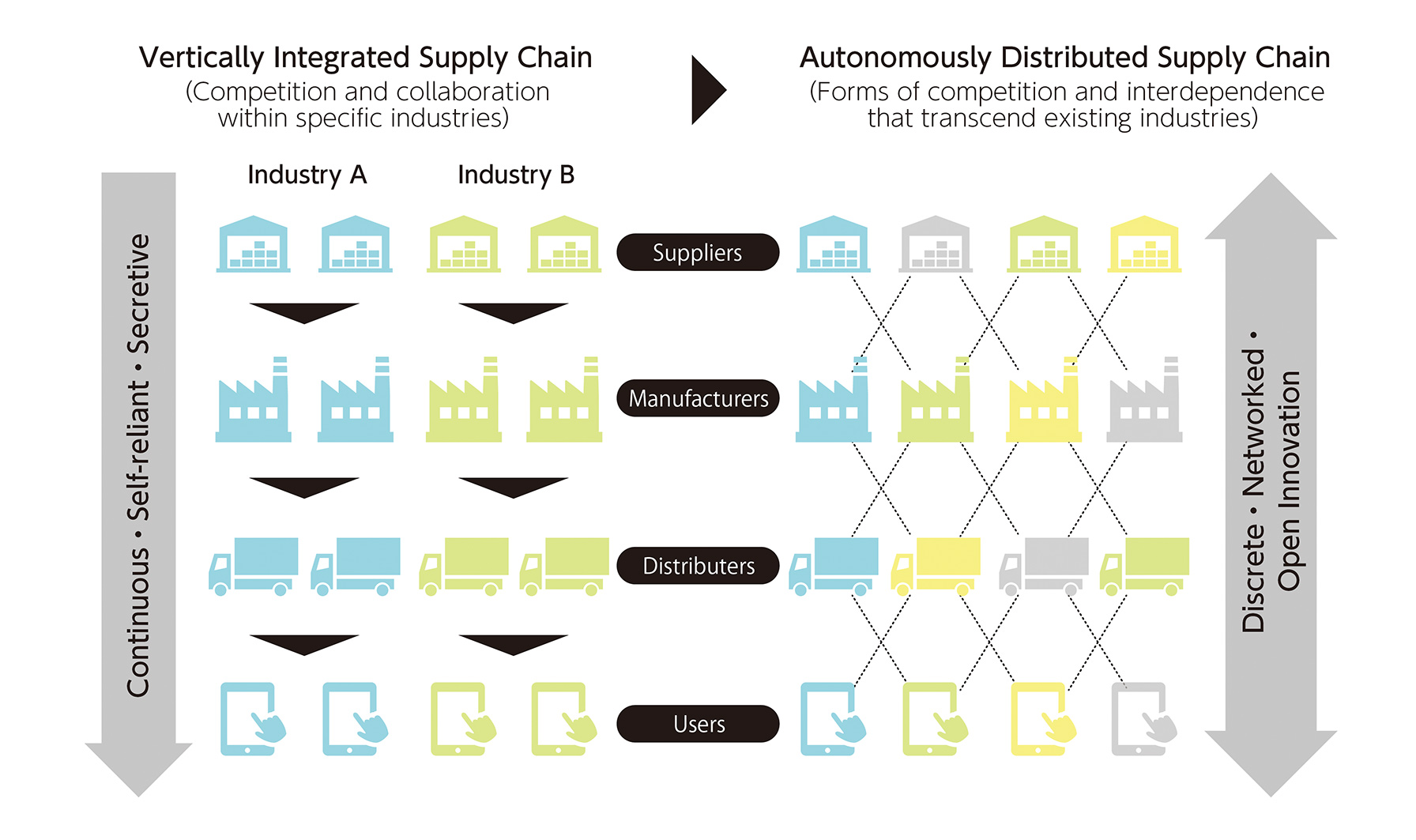 The Ecosystem Created by Industry 4.0
The Ecosystem Created by Industry 4.0
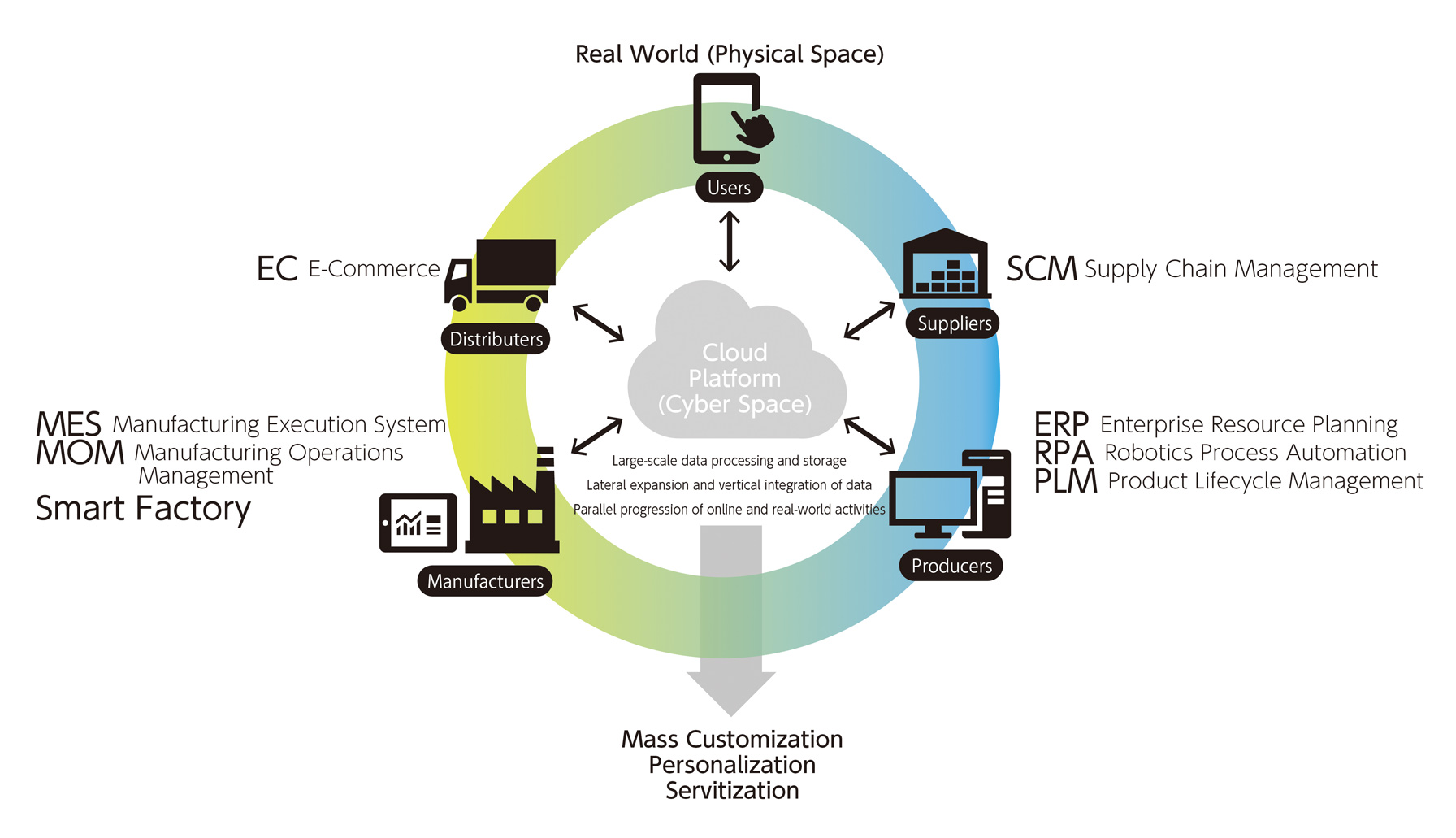 Conceptual Diagram of Cyber-Physical Systems
Conceptual Diagram of Cyber-Physical Systems
The Progression towards Shared, Universal, and Multifunctional Industrial Architecture Returning to Urban Areas
During the era of mass production and consumption, building large-scale factories and research institutions in the suburbs was a common practice due to the emphasis on scale. However, as production equipment becomes more efficient and compact, and automation advances, the opportunity to downsize these spaces has emerged. This shift helps reduce energy consumption related to air conditioning and lighting, paving the way for more sustainable production activities. Further, there is an escalating demand for an exchange of sophisticated knowledge and talent facilitated by open innovation, alongside the emergence of micro-factories that carry out small-scale, dispersed production. Consequently, it is likely that manufacturing bases, including research and development, will return to urban areas which are more accessible and closer to consumption sites. Looking ahead, we anticipate a future where production and consumption coexist in cities worldwide. These urban spaces will potentially give rise to distinct industrial clusters, each reflecting and leveraging the unique characteristics of their respective regions.
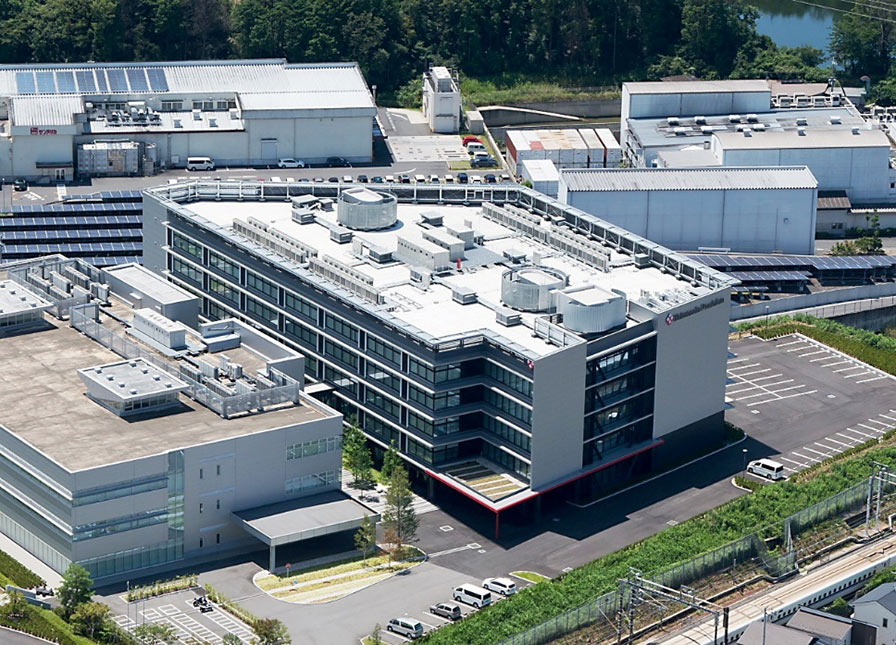 Exterior of the “Matsusada Precision Production Center”
Exterior of the “Matsusada Precision Production Center”
Photo: SS Co., Ltd
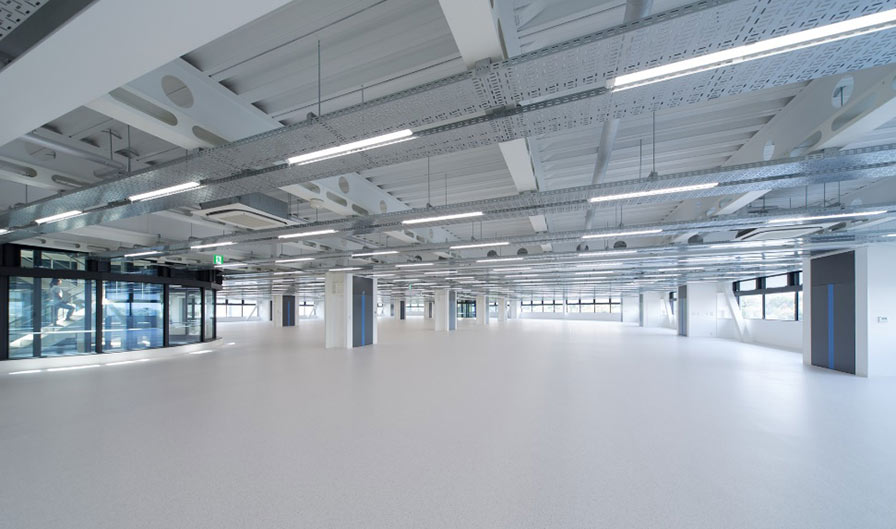 The Unrestricted Multi-use “Large Room” Functioning in Development, Production, and Logistics
The Unrestricted Multi-use “Large Room” Functioning in Development, Production, and Logistics
Photo: SS Co., Ltd
An Advanced Design Process to Give Form to Innovation
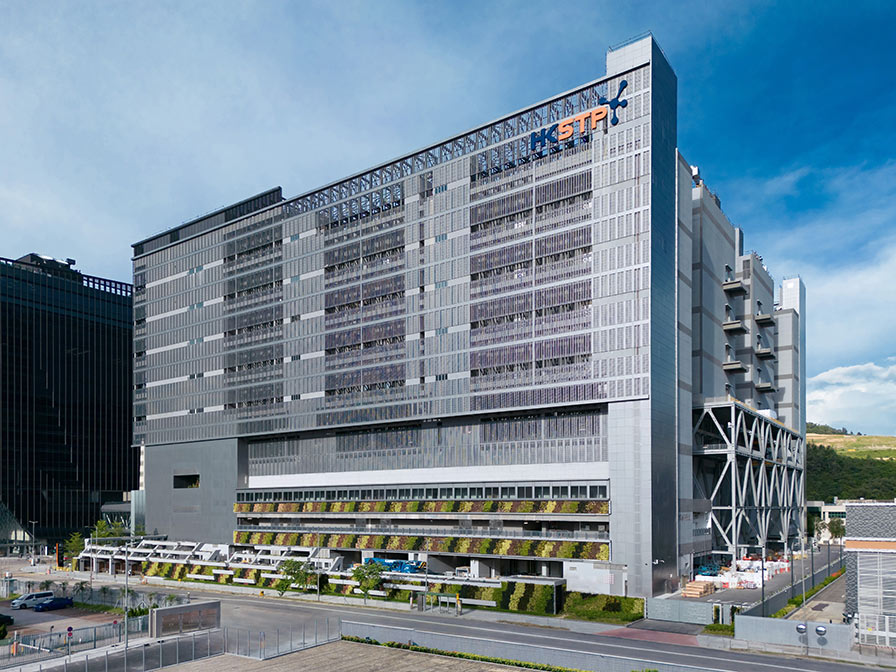 Photo: Wong Tung & Partners Ltd
Photo: Wong Tung & Partners Ltd